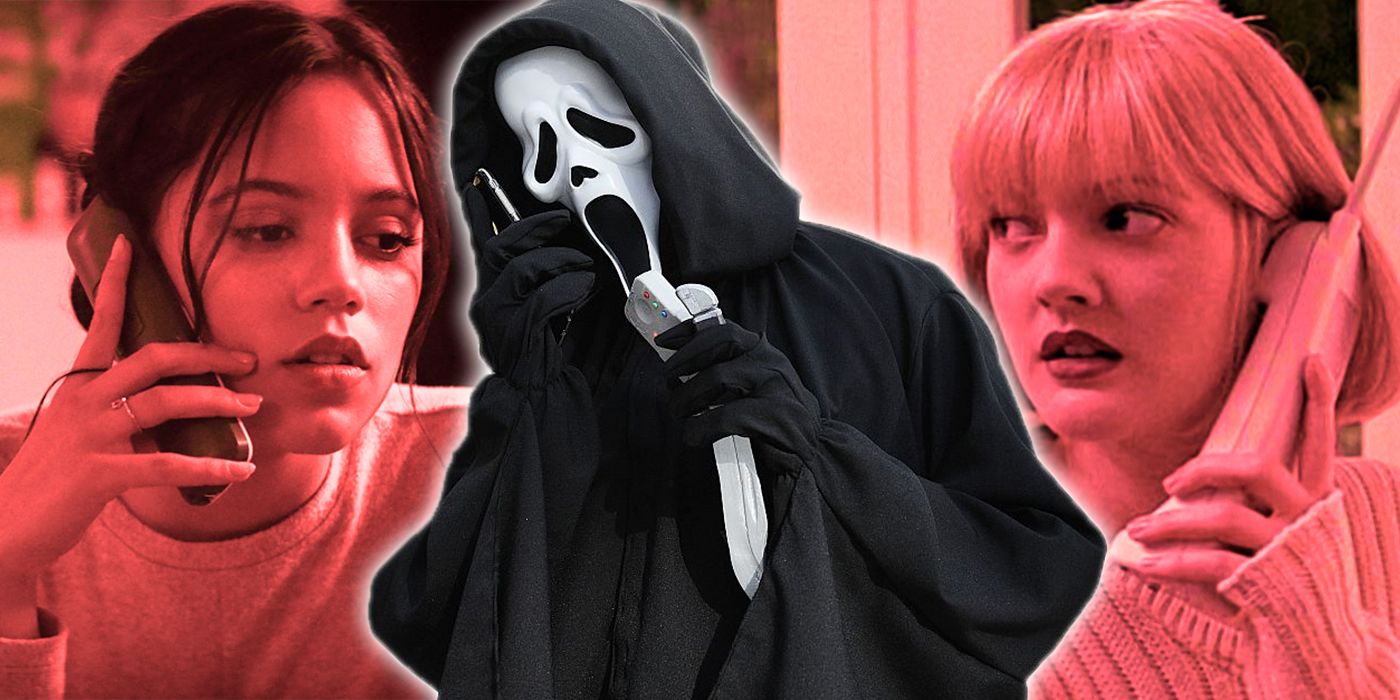WARNING: The following contains spoilers for Scream, now playing in theaters.
In the horror genre, especially in the '70s to '90s, many movies stayed away from one key element: the phone. Scream was one of the few that waded into it, all thanks to Wes Craven's vision in 1996. However, come modern films, the cellphone became taboo due to its mobility, ease of access and how it offered help in times of suspense. However, 2022's Scream embraced this bit of technology, upping the tension and intimidation.
It's understandable why cellphones detract from a horror narrative, as they remove suspense by allowing the victims to easily call the police from almost anywhere. This is why a new trope in the genre has come about: people lose their cells, they've got no cell service, or they end up with a broken phone.
It prevents deus ex machinas and plot conveniences from playing out, but in the new Scream, cells are welcome. It's first seen with Tara speaking to Ghostface in the opening act, with the slasher sending her a live video of her friend, Amber. Livestreaming like this made the movie a bit more real-time, adding a cerebral edge as Tara went into panic mode. It eventually forced Tara to play the game, which ended with her getting cut up.
Tech was used in a clever manner later on when the killer taunted Tara's sister, Sam, at the hospital by turning the phone into a tool of torture rather than one of safety. It removed that reassuring vibe and kept the killer on the targets' backs at all times, leaving fans guessing who'd get the next call. It's something Judy also experienced when getting the call from Ghostface about her son, Wes. It had her rushing home, which ended in the sheriff getting gutted at the front door, proving the cell was part of an elaborate trap.
The cell was also used in the return hit on Tara, with Ghostface offering Sam the choice to pick between her sister or her wounded lover, Richie, at the hospital, leaving the killer salivating over the phone. Another heartbreaking cut was how the cell distracted Dewey when Gale called to find out about his safety in the hospital, allowing Ghostface to finally kill him. It got even scarier later when Chad left Amber's party, using a tracking app to find his angry girlfriend, Liz, only to end up murdered. What was even more crushing was how he struggled to use his touch screen interface because of the blood on his hands and phone.
All this tied into Ghostface's quest to bridge the old and new generation in Scream, not just in terms of viewers but the narrative. The killer wanted the best of both worlds, so allowing cell usage to thrive was a meta-statement. Funny enough, Sid was the one to end the film's use of cellphones by hanging up hers to fight Ghostface because she didn't need contact anymore -- just a brawl. It once more showed Scream didn't take itself too seriously while modernizing the franchise.
To witness how cellphones become a weapon of torture, Scream is now in theaters.



